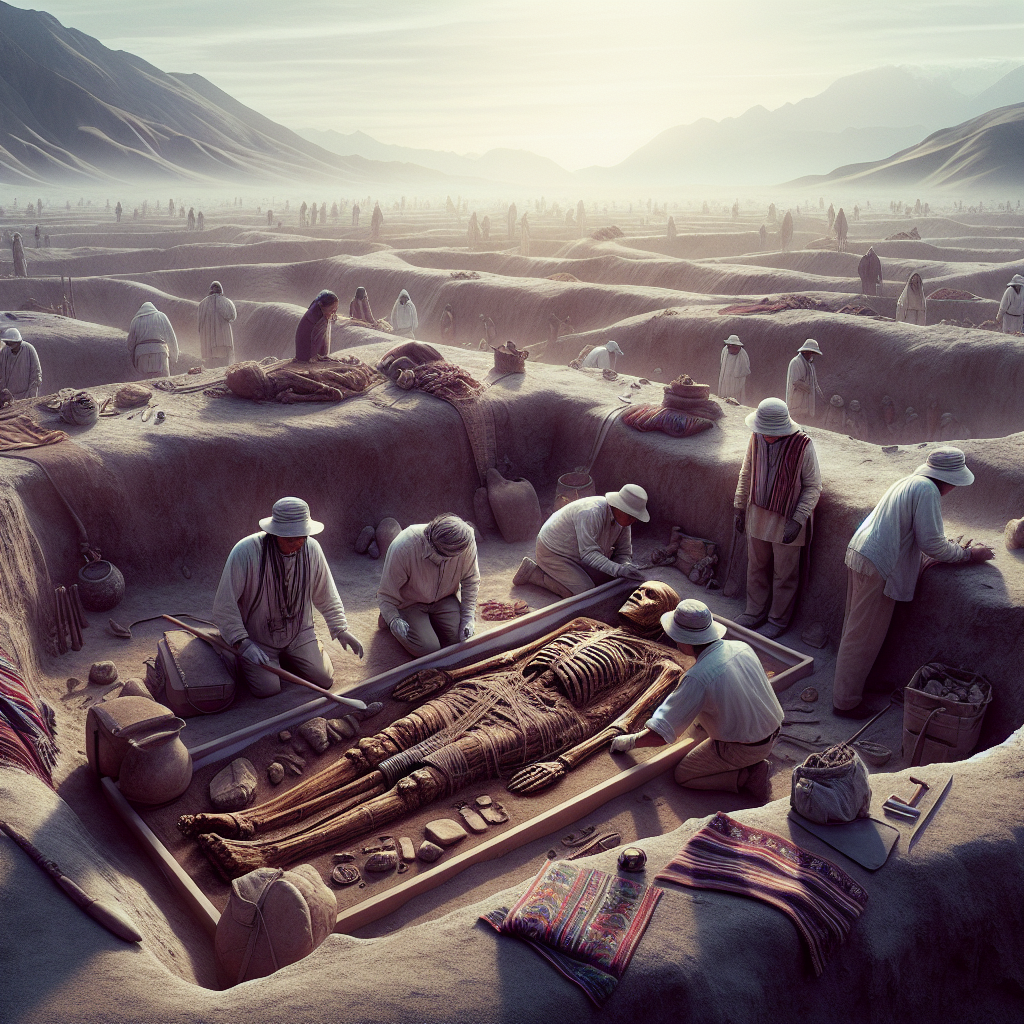Listen up, truth-seekers and skeptics alike—because what I’m about to drop is older than your grandma’s conspiracy theories and packed with more implications than a diplomat at a private donor dinner. Straight from the land of ancient marvels, political tumult, and most recently, late-stage capitalism’s new vacation darling—Peru—archaeologists have pulled a rabbit out of history’s hat: a 5,000-year-old mummy. A woman. Preserved. Silent. And oh boy, does she have a lot to say without saying a word.
Now, you might be thinking, “So what, it’s just another dusty relic from a lost civilization.” But sit down, buttercup, because this isn’t just your average walk through ancient history—this is a full-blown time capsule into power, gender, and the eternal human obsession with legacy.
Let’s peel back the burial wrappings, shall we?
This woman—her remains nestled in the dry earth like a secret the Andes forgot to tell—is believed to date back to around 3000 B.C. That’s Stone Age territory, people. Before the Inca, long before TikTok, and definitely before half our political class learned how to fake sincerity on camera. The site? Lima’s outskirts, ground zero for what could go down as one of the most significant archaeological discoveries in South American history.
And here’s the kicker that should make every historian sit up straighter than a senator under indictment—the body’s condition is remarkably intact. So preserved, in fact, she might outlast whatever fresh hell the news cycle vomits out next week.
Now, let me get loud and clear: this isn’t just anthropology—it’s a masterclass in power, diplomacy, and survival. Because let’s be honest, it takes some serious strategic chops to be remembered for 5,000 years when most politicians these days can’t survive five minutes without a PR team and a panic button.
And here’s where it gets juicy. Who was she? A leader? A priestess? A matriarch running her own proto-parliament while men were still figuring out how to sharpen sticks? We don’t have the full dossier on her yet, but mark my words: this woman didn’t just exist—she endured.
Take that, legacy-chasing billionaires trying to buy immortality in cryogenic labs. This ancient queen rolled herself in layers of linen, sand, and glory—and still looks better than half the filtered selfies floating through Congress these days.
Let’s pivot, shall we? Political metaphor incoming. In today’s power landscape, everything ages fast. Scandals, alliances, careers—all mummified in real-time by a 24/7 smear cycle. But amidst that noise, this discovery reminds us: real power echoes through centuries, not Instagram stories. It’s not just who shouts the loudest—it’s who shapes culture, who defines a legacy.
So as modern power players stumble over promises they can’t keep and narratives they can’t control, this ancient Peruvian woman remains a silent monument to endurance, tenacity, and perhaps, just maybe, a timeless middle finger to those who thought history wouldn’t remember her.
Think about that the next time a political candidate compares themselves to a “common person” while flying private to a climate summit. Power fades. But legacy? That’s the long game.
Meanwhile, back in Peru, the excavators continue to dust off secrets buried beneath millennia. And we watch, we learn, and we remember—history has no use for your spin. But it sure as hell respects strategy.
So welcome back to the headlines, Queen of the Andes. You outlived empires. Let’s see who remembers you 5,000 years from now.
Game’s on. And she clearly came to win.
– Mr. 47










